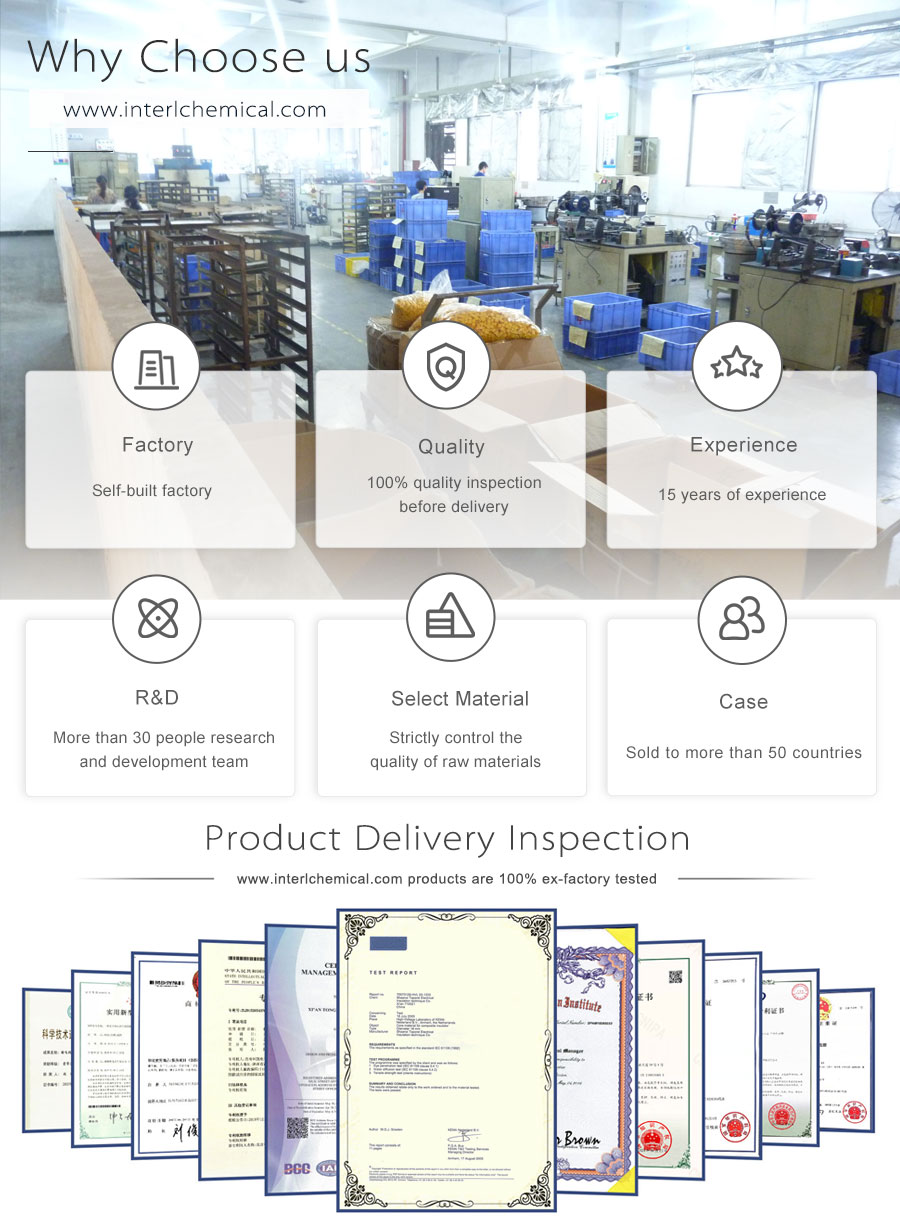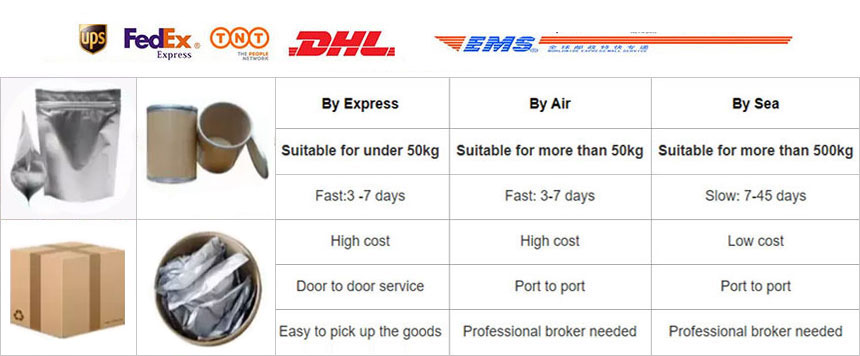Phone: 86-29-89601602
Mail: sales27@interlgroup.com
Add: Room 305 , 3/F , Haipai Decoration Office Building , Yudu Avenue , Yuncheng , Shanxi
provitamin B5 Panthenol Powder for skin CAS 16485-10-2
Product Overview:
Panthenol Powder is a western medicine. It is commonly used in injectable form. A prokinetic agent.Panthenol Powder has been suggested for intestinal sluggishness or distension, postoperative consumption and poor fecal excretion, prevention and treatment of paralytic intestinal obstruction following abdominal surgery or trauma, equine hernia pain (not caused by mechanical obstruction), and other disorders where smooth muscle function is impaired. There is a lack of research evidence on the effects of the drug on these conditions.
Panthenol CAS 16485-10-2 is a white crystalline hygroscopic powder.Panthenol Raw Materials
Panthenol can promote the metabolism of proteins, fats and sugars, protect the skin and mucous membranes, improve the color and luster of hair, and prevent the occurrence of diseases.
provitamin B5 Panthenol Powder for skin CAS 16485-10-2 Attributes
MF:C9H19NO4
MW:205.25
EINECS:240-540-6
Specification:99% min Panthenol Powder
Sample:Panthenol Powder
Keywords: panthenol benefits
Appearance: White Powder
Storage: Cool Dry Place
Brand: Ausreson
Shelf Life: 2 Years
Test Method: HPLC
Protal:https://www.hrkpharmaceutical.com/
provitamin B5 Panthenol Powder for skin CAS 16485-10-2 Details
Uses and synthesis of Panthenol Powder
Panthenol Powder is a western medicine. Panthenol Powder is commonly used as an injection. Panthenol Powder has been suggested for intestinal sluggishness or distension, postoperative consumption and poor fecal excretion, prevention and treatment of paralytic intestinal obstruction following abdominal surgery or trauma, equine hernia pain (not caused by mechanical obstruction), and other disorders where smooth muscle function is impaired. There is a lack of research evidence on the effects of the drug on these conditions.
Panthenol CAS 16485-10-2 is a white crystalline hygroscopic powder.Panthenol Raw Materials
Panthenol can promote the metabolism of proteins, fats and sugars, protect the skin and mucous membranes, improve the color and luster of hair, and prevent the occurrence of diseases.
Hot selling products on Amazon, TK, Alibaba and Henrikang.Panthenol (Provitamin B5) is the alcohol form of pantothenic acid, converted in vivo to vitamin B5. It’s a gold-standard hydrating and repairing agent in skincare, haircare, and wound healing.

About us.
Formula, size support customization. We can provide packaging according to your requirements, including boxes and labels.
We support customized capsules, softgels, gummies, tablets, effervescent tablets, drops&drinks, gels, and more.
If you are interested in our products, please feel free to contact us for more information.https://www.interlchemical.com/about/Contact-us.html
Applications / Functions of Panthenol Powder
Panthenol Powder is a deep-penetrating moisturizer that can stimulate the growth of epidermal cells and easily absorb, penetrate and permeate the stratum corneum on the surface of the skin.Panthenol CAS 16485-10-2 gives the skin luster and prevents roughness and aging.Panthenol CAS 16485-10-2 has a powerful effect of strengthening the skin barrier, especially when combined with niacinamide. Especially when combined with niacinamide, it gives the skin better protection against external factors.
Panthenol, also known as provitamin B5, is a widely used vitamin B nutritional supplement. It is widely used in medicine, food, feed, cosmetics and other fields. It is widely used in skin medicine, skin care and hair cosmetics.
Panthenol Raw Materials is a vitamin B5 derivative, often referred to as a "pro-vitamin B5". This derivative is widely used in the pharmaceutical, food, feed, and cosmetic industries.
Being metabolized in the same way as vitamin B5 in living organisms, Panthenol Raw Materials are used in the food industry:
Panthenol Raw Materials are used as nutritional supplements and fortification agents.
Promote the metabolism of proteins, fats and sugars in the human body.
Maintain skin and mucous membranes, improve hair luster, enhance immunity and prevent diseases;
Panthenol Raw Materials in the cosmetics industry:
Skin care role in the performance of deep penetration of moisturizing agent, stimulate the growth of epithelial cells, promote wound healing, anti-inflammatory effect;
Hair care role of reed swim containing performance as a long-lasting moisturizing function, Panthenol CAS 16485-10-2 to prevent hair splitting, damage, increase the density of hair, improve the luster of hair;
Nail care on the performance of the improvement of nail abrasion branch hydration, endowed with nail flexibility.
Panthenol Powder properties and stability.
Panthenol CAS 16485-10-2 is soluble in water, ethanol, methanol and propylene glycol, soluble in chloroform and ether, slightly soluble in glycerol, insoluble in vegetable oil, mineral oil and fat.
Panthenol Powder White crystalline hygroscopic powder. Soluble in water, ethanol, methanol and propylene glycol, soluble in chloroform and ether, slightly soluble in glycerol, insoluble in vegetable oil, mineral oil and fat.
Product method of Panthenol Powder
1.Main reagents and instrumentsD(L)-Pantolactone, purity 9%0 Sigma. Aldrich; Sodium Methanol.
Aldrich; sodium methanol, 98.5% purity, industrial product; guanidine carbonate, 98.5% purity, industrial product; the rest were commercially available chemically pure or analytically pure reagents.
WRS-IA melting point meter, Shanghai Precision Scientific Instrument Co.
WRS-IA Melting Point Instrument, Shanghai Precision Scientific Instrument Co.
WRS-IA Melting Point Instrument, Shanghai Precision Scientific Instrument Co. Infrared spectra (IR) were determined by NicoletFI-IR spectrometer.
Infrared spectroscopy (IR) was determined by NicoletFI-IR spectrometer and KBr was pressed.
2. Preparation of D, L-pantothenic acid lactone and its 3-aminopropanol D, L-pantothenic acid lactone was prepared with diethyl oxalate and 3-aminopropanol.
D,L-pantothenic acid lactone was prepared from diethyl oxalate, isobutyraldehyde and formaldehyde by catalytic hydrogenation in a clean process.
D, L- pantothenic acid lactone was prepared from diethyl oxalate, isobutyraldehyde and formaldehyde by catalytic hydrogenation in a clean process with 77% yield and 98.5% content.
Cyclohexanone oxime as raw material, condensed with acrylonitrile, prepared by catalytic cracking, yield 60%, content 99.0%.
60%, content 99.0%.
3. In a 250mL three-necked bottle add guanidine carbonate 10g (0.055mol) and 150
mL of water, stirred to dissolve and added calcium hydroxide 8.9g (0.12 mol), warmed to 60
C and reacted at this temperature for 30~ 40 min, filtered, and under the protection of nitrogen gas, the
13.0 g ( 0.1 mol) of D, L-pantothenic acid lactone was added to the filtrate and the reaction was held for 1 h. The reaction was completed.
After the reaction was completed, the solution was concentrated to a thick consistency and cast into acetone in batches with stirring.
Crystals were precipitated, filtered and dried to obtain a white powdery solid of 17.2 g, yield 91.6%, melting point 129.0~130.0%.
The melting point was 129.0~130.1. According to the above steps, D-pantothenic acid lactone and L-pantothenic acid lactone were used as raw materials for the production of D-pantothenic acid lactone.
guanidine D-pantothenate and guanidine L-pantothenate were prepared from D-pantothenic acid lactone and L-pantothenic acid lactone as raw materials.
4. 120 mL of methanol and D,L- guanidine pantothenate were sequentially added to a 250 mL round bottom flask.
Guanidine pantothenate 48.4 g. Then heat to 45 degrees, stir to dissolve, cool to 9~ 10
Then add 0.05 g of D-guanidinium pantothenate as crystal seed, stir slowly, keep warm for I h, filter and dry.
Filtration, drying, can be obtained white crystalline solid 4.4 g, fused
Crystalline solid 4.4 g, melting point 151 ~ 152 degrees, 20D = -22.5. (c = 4, methyl alcohol), 20D = -22.5. (c = 4, methyl alcohol), 20D = -22.5.
(c=4, methanol),20D=-22.5. (=2, methanol). The filtrate was supplemented with the corresponding amount of 4.4 g of D,L-
guanidine pantothenate and methanol, and then operated as above, using guanidine L-pantothenate as the crystalline species, to produce
White crystalline solid 4.2g. Melting point 151~ 152 degrees, 20D=+22.5. (c=4, methanol), literature value for
(c=4,methanol) and literature value of 20D= + 22.5. (e=2,methanol). Repeatedly following the above steps
operation, D-pantothenic acid guanidine and L-pantothenic acid guanidine were continuously obtained.
5. Add D-guanidinium pantothenate to a 100mL round-bottomed flask.
14.1 g (0.075 mol) and 30% sulfuric acid 13.7 g (0.042 mol) in a 100 mL round-bottomed flask, warmed to 85 degrees Celsius, and held the reaction for 2 days.
temperature to 85 degrees Celsius, hold the reaction for 2h, cooled to room temperature, diluted with water, and then extracted by chlorine
After diluted with water, extracted by chloroform (50 mLx3), the extracts were combined and dried with anhydrous sodium sulfate, filtered, and the filtrate was concentrated under reduced pressure.
Filtration, filtrate concentrated under reduced pressure to remove chloroform, obtained D-pantothenic acid lactone 9.0g, yield
92.3%, melting point 88 degrees (literature value 89.), [a]2D=-49.8. (c = 4, water), [{a]
"ID=-50. (e=1,water).

Use the product safely.
The U.S. Food and Drug Administration (FDA) is an important agency of the U.S. federal government responsible for regulating food, drugs, medical devices, cosmetics, biological products, and tobacco products to ensure their safety, effectiveness, and quality. Food and dietary supplements can support your overall health, please use them wisely.
Company advantages.
We have 20 years of industry experience and always adhere to quality first to provide customers with the most reliable products and services.
We have our own R&D team and workshop, and can provide customized services according to your needs. We have strict quality control on the production side, set up multiple inspection points in the production process, find and correct problems in time, and conduct comprehensive inspections on finished products to ensure that the products meet quality requirements.
In addition to plant extracts, vitamins, mineral supplements and food additives, our main products include capsules, soft capsules, solid beverages, soft candies, drops, gels, tablets and effervescent tablets. We can customize labels and product formulas according to your needs until you are satisfied.
We are customer-centric, provide 7*24 hours all-weather service, and respond quickly to customer needs.
Click here for professionals to answer your questions. sales28@interlgroup.com










